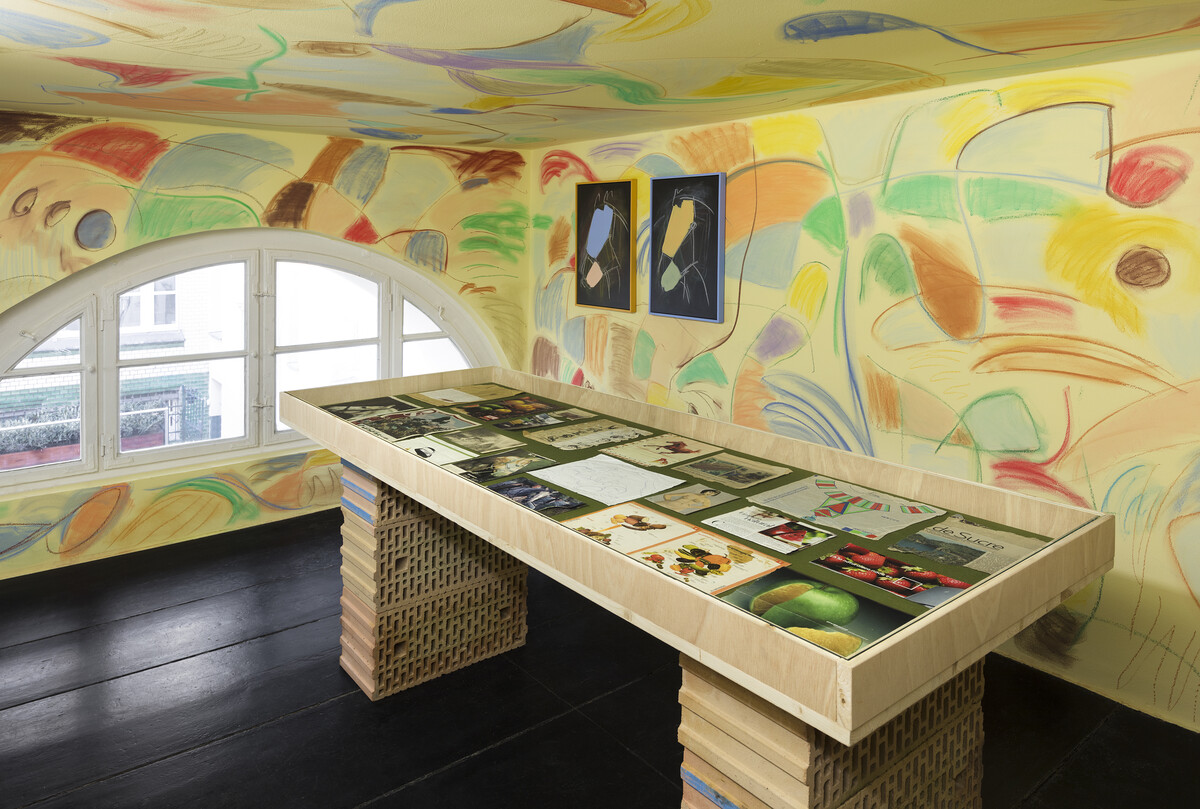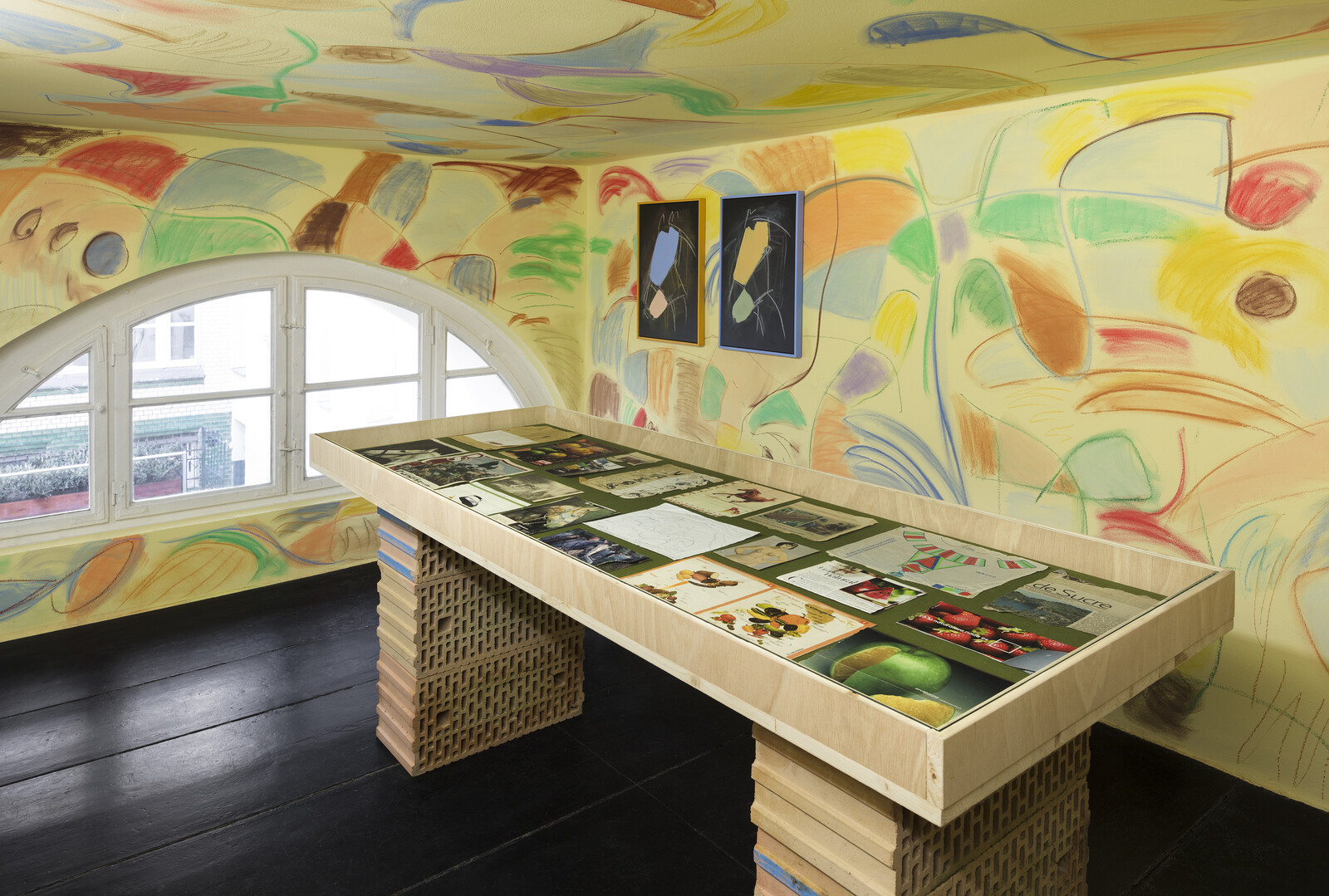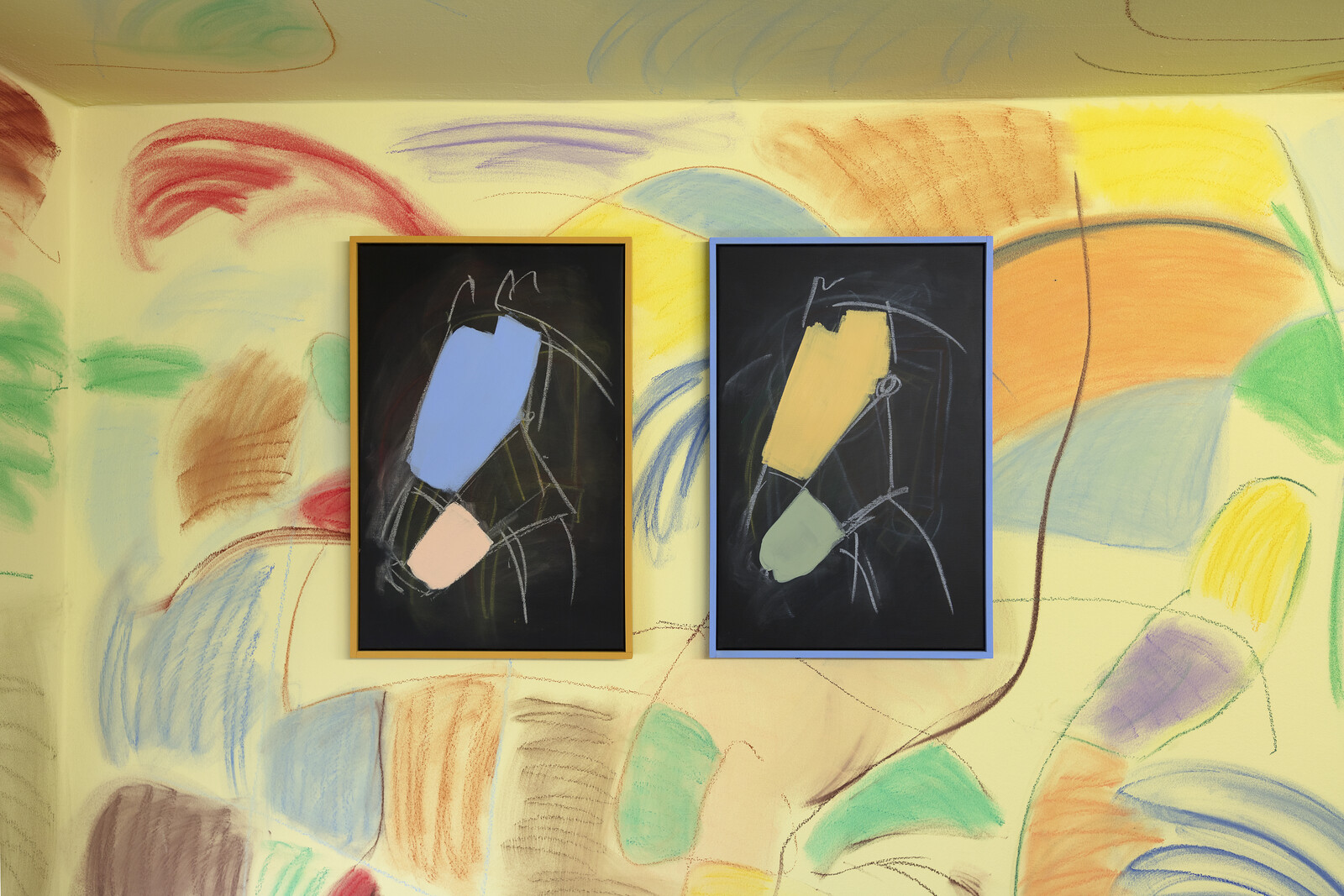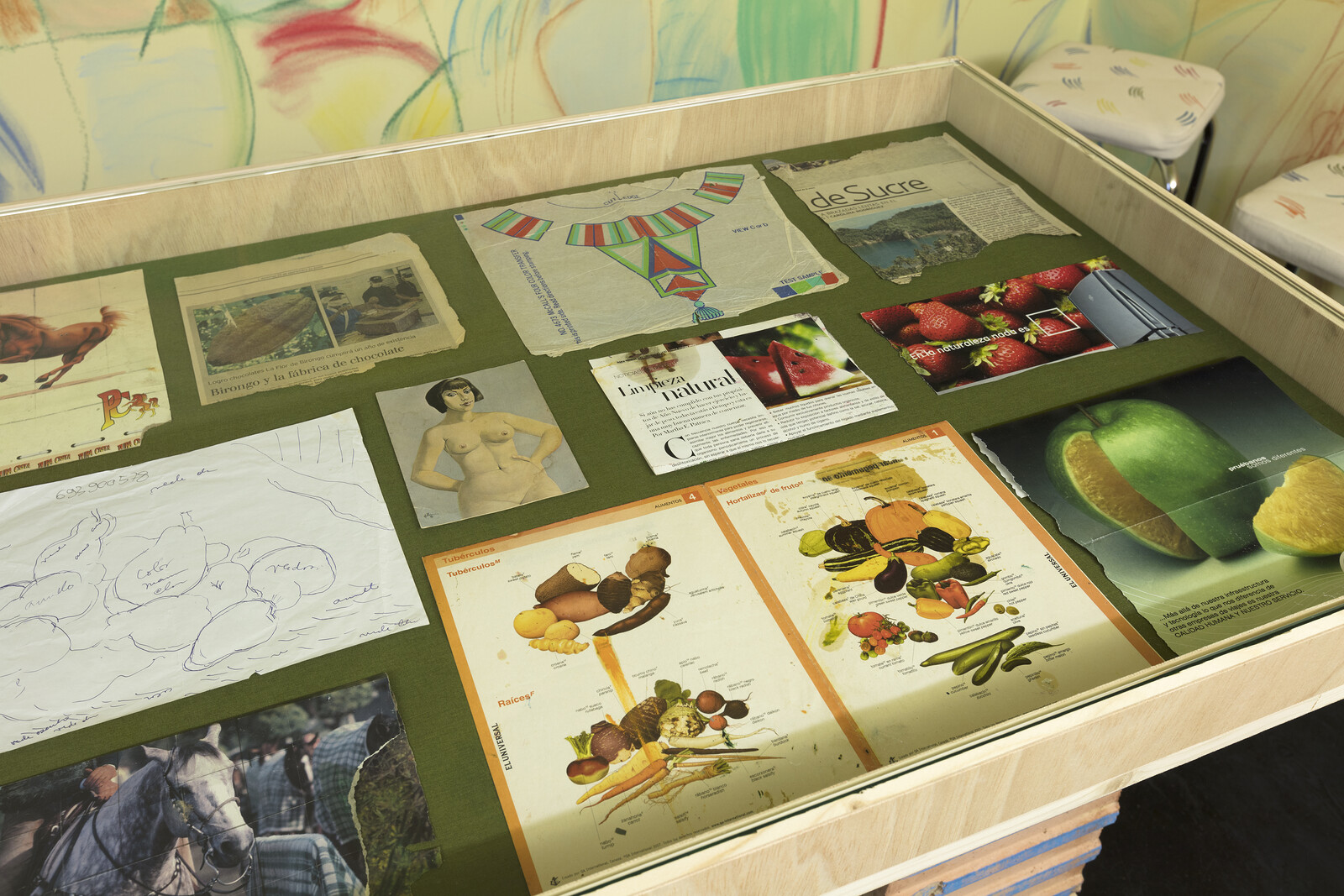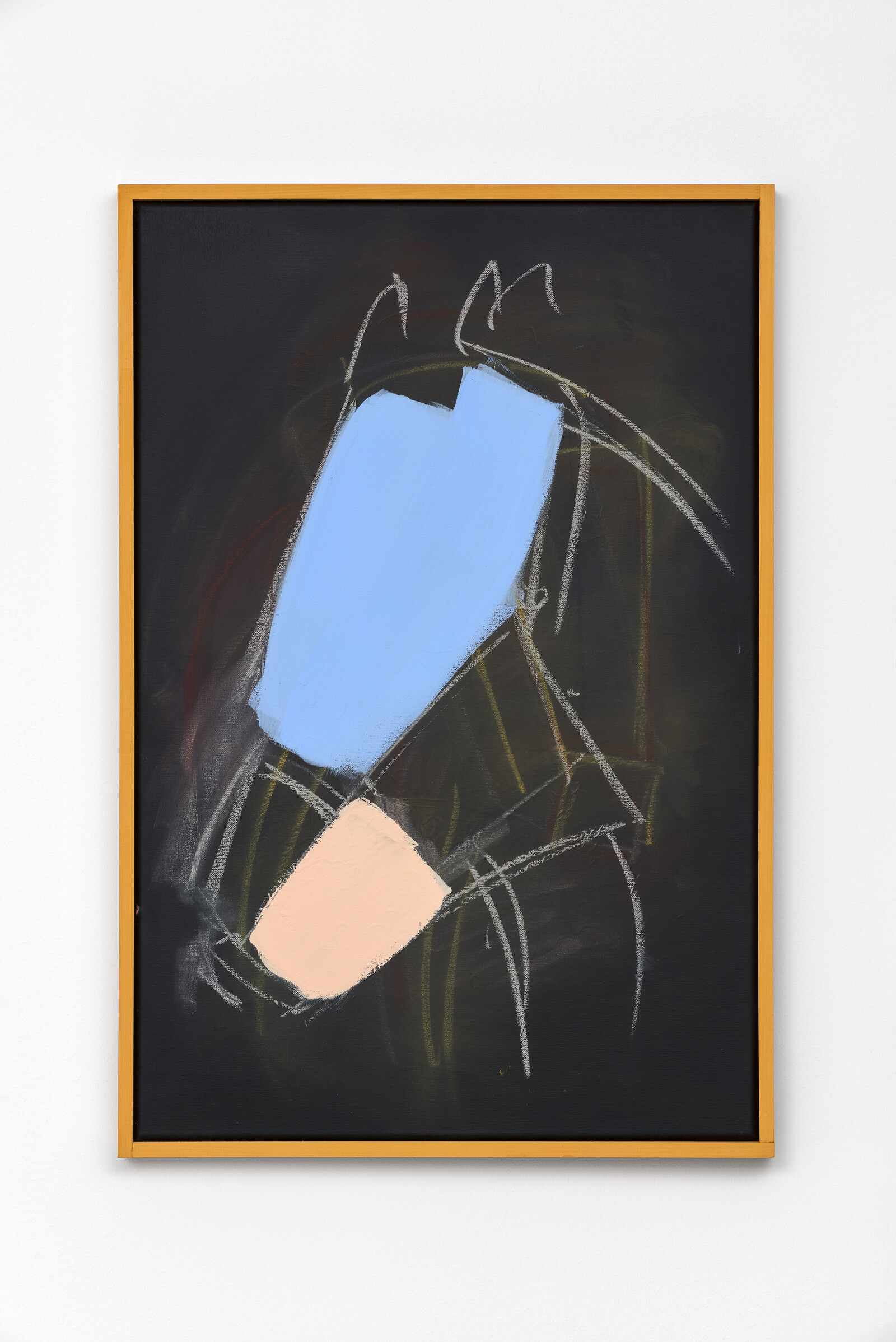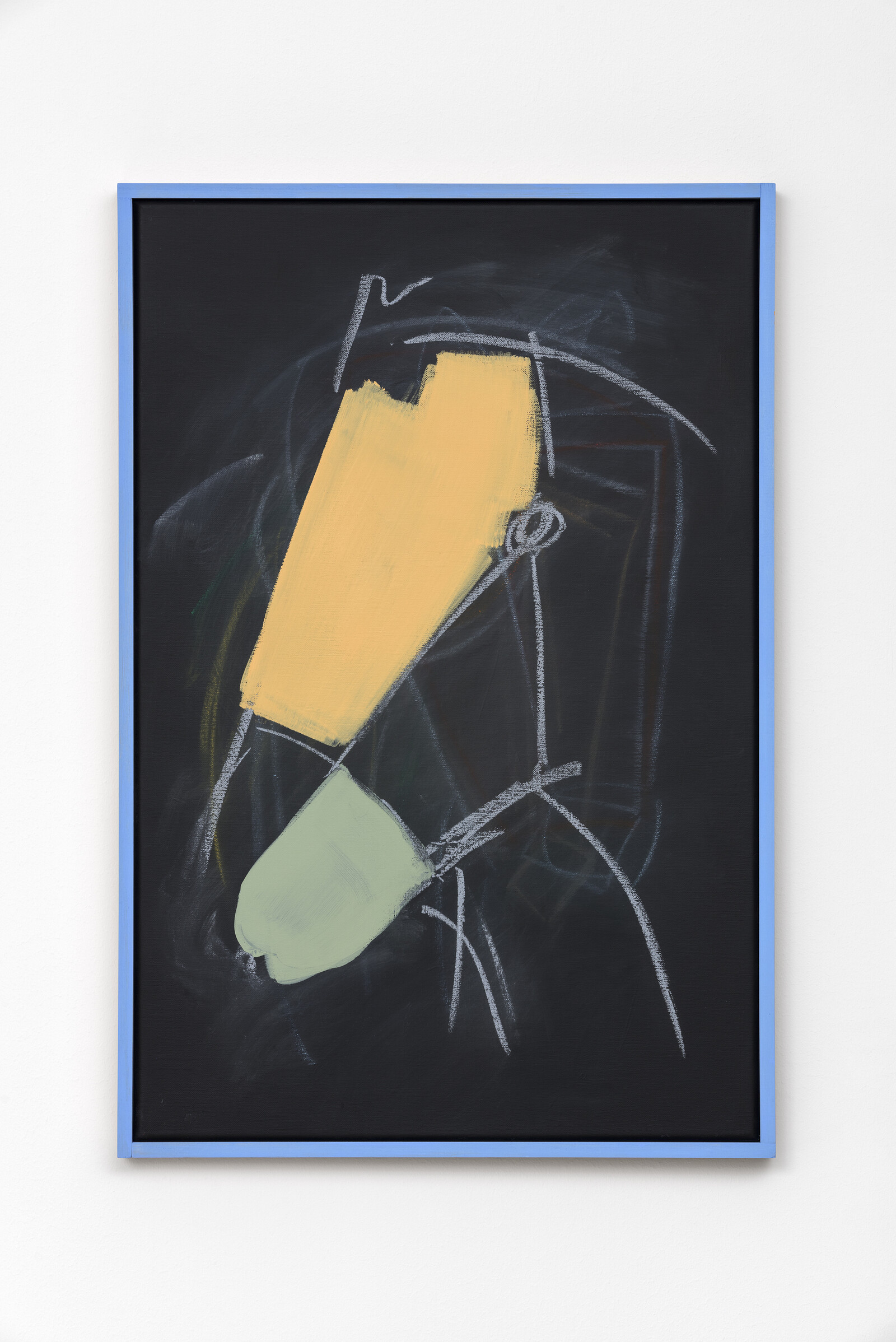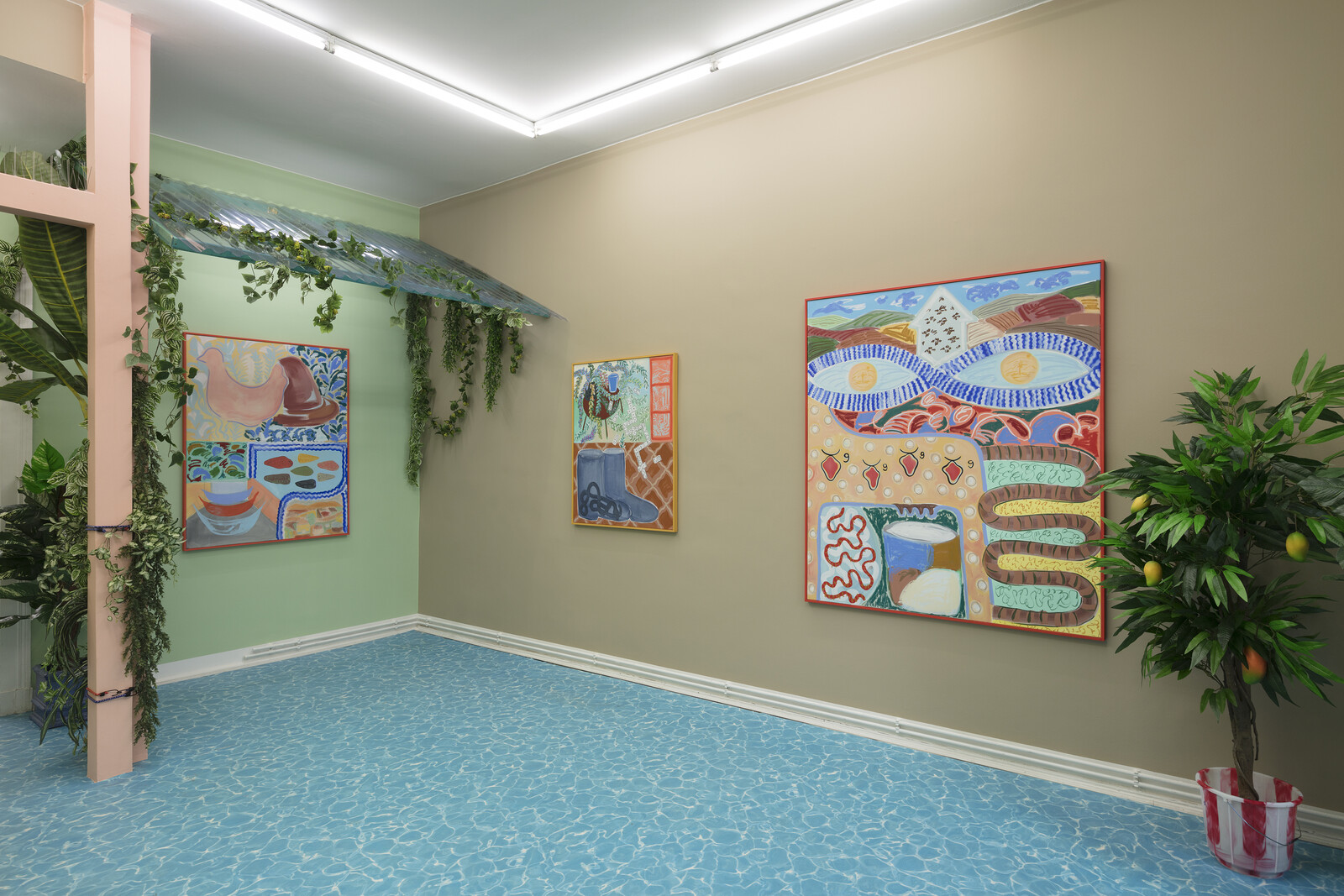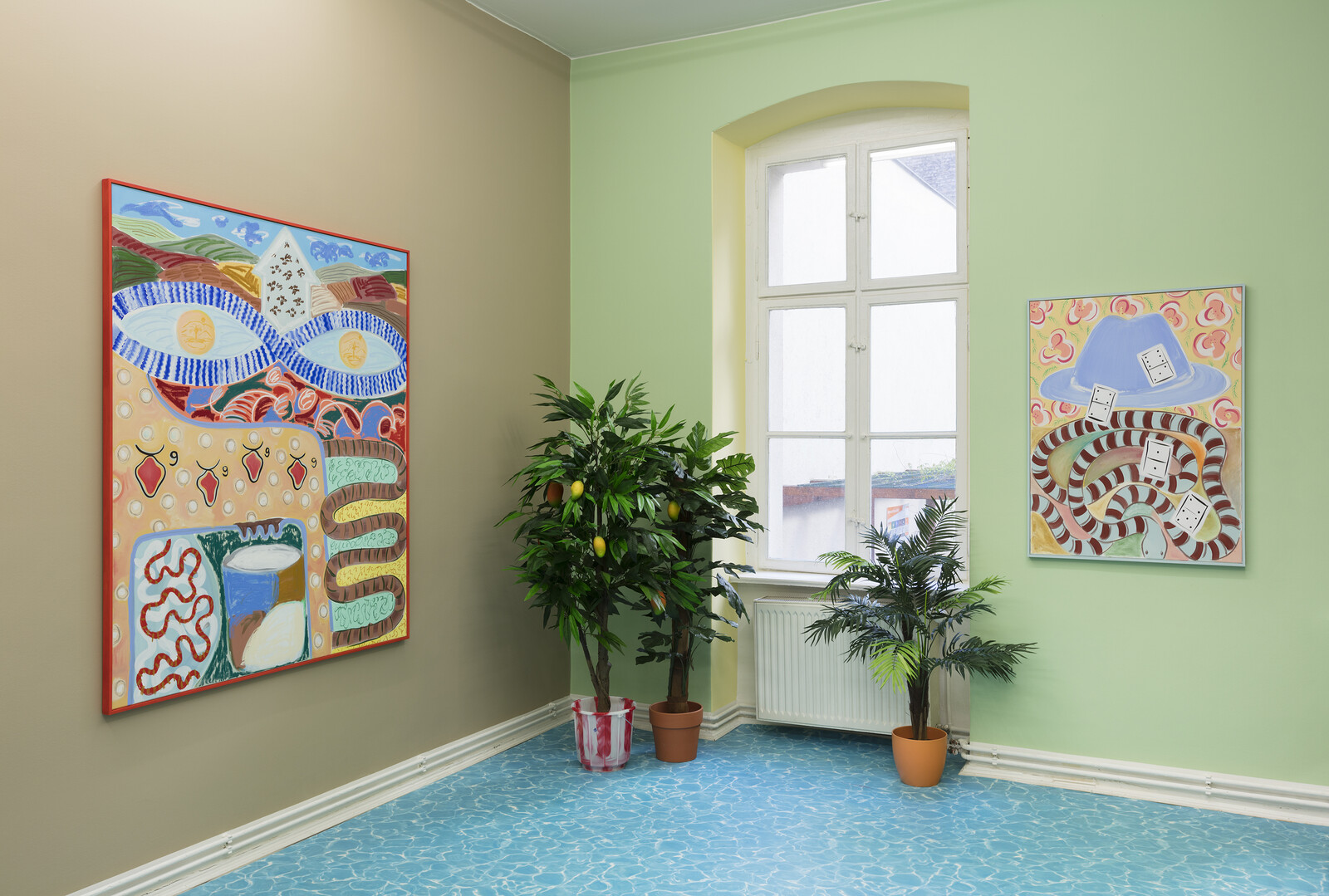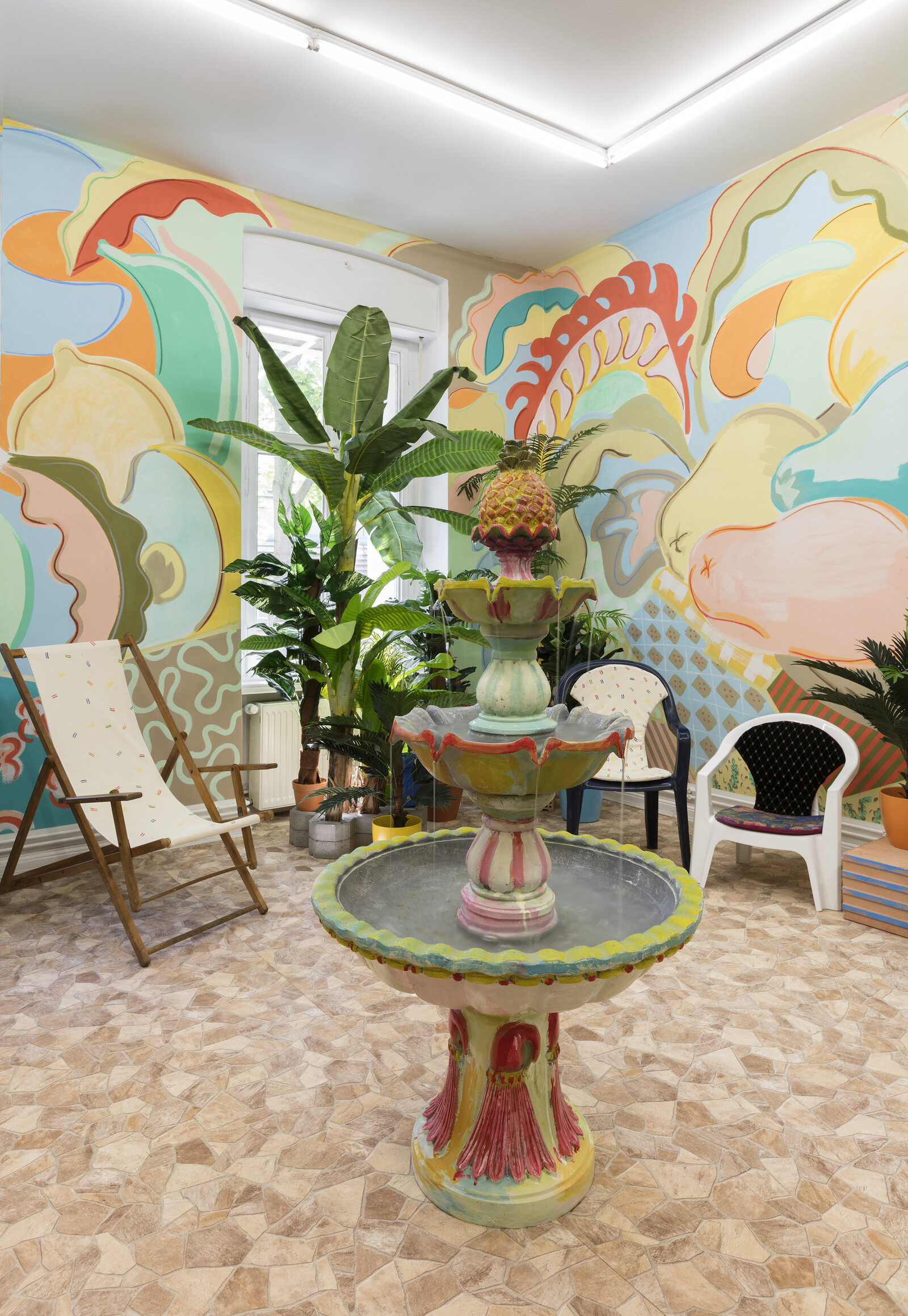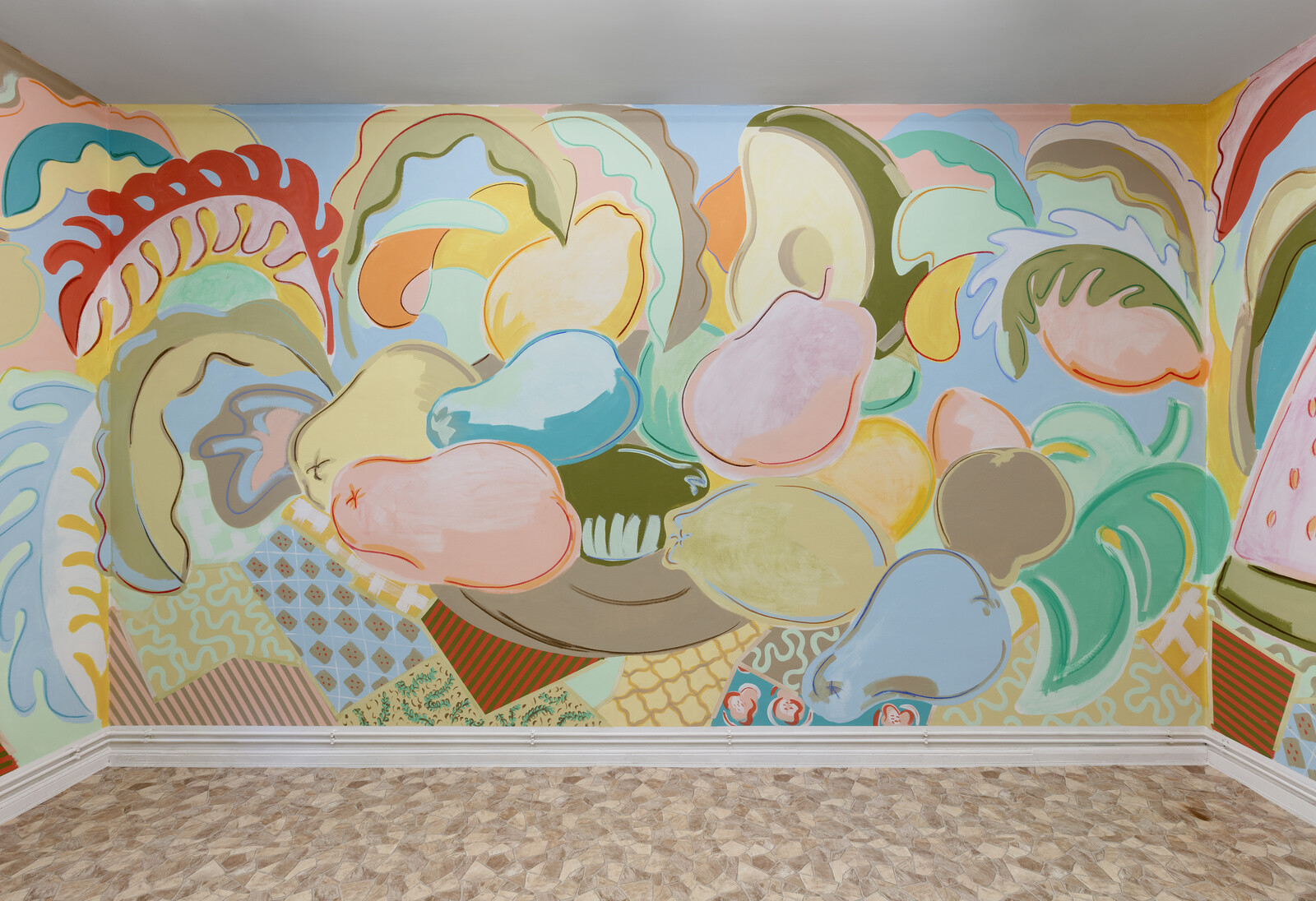For her first exhibition at Berlin gallery ChertLüdde, Sol Calero transformed the typical German altbau into a luminous and colorful family home inspired by the artist’s grandmother’s farmhouse in Los Llanos, Venezuela, a grassland plain south of Caracas, where Calero and her cousins spent the summer months.
In Jesús Martín-Barbero’s seminal study of the role of media in the formation of national cultures in Latin America, social memory emerges as vivid mise-en-scène where popular iconography and labor struggles are ambiguously combined, creating a new social sensibility predicated on access to forms of expression.1 Experiencing and expressing the world becomes a matter of public fiction, wherein moments of systemic muting and glossing over the collective archive grow deeply entwined with class imaginaries. In this recurring scenario, oral histories, with their warranted omissions and excesses, reclaim an important effort in tracing personal and social routes. For Calero, the turn from personal archive to social space lays the foundation for “Archivos Olvidados” [Forgotten Archives], a thoughtful tribute to the fluidity of memory, childhood anxieties, and the artist’s late grandmother, the painter Luisa Hernandez, lovingly referred to as “Abuli.”
As a widow, Hernandez raised six children, studied fine art in Caracas, and returned to Los Llanos where she taught arts and crafts to local children as well as Calero and her cousins. The exercises in color and form animate the mural in the installation Archivos olvidados (El cuarto de Abuli) [Forgotten Archives (Nana’s Study)] (all works 2019), which is centered around a vitrine containing Hernandez’s archives of collected magazine clippings she used as references for her paintings, and surrounded by child-sized stools topped with patterned cushions designed by the artist. Hanging above the vitrine against the pastel mural are two blackboard drawings, Caballo I and Caballo II [Horse I and Horse II], where Calero has repeatedly attempted to draw various views of a horse in a tribute to Hernandez’s interest in equestrian motifs.
In the next gallery, a patterned turquoise vinyl flooring recalls sunlight reflecting on a wading pool the cousins precariously assembled and alludes to the vague, aqueous nature of memory. Hanging atop walls painted in pale yellow, eggshell, and green hues is a series of six acrylic, oil, and pastel on canvas paintings that recount Calero and her cousins’ summer memories. Playing with the relation between figure and background, Calero’s paintings depict fruit and landscapes alongside dominoes, horses, snakes, and outlines from the property keeper’s llanero hat. Sombrero y culembra [Hat and Snake] aggrandizes a serpentine figure reappearing in Espino I [Thorn I] alongside a deconstructed udder and a glassful of raw milk, which the metropolitan cousins surreptitiously offered the local children; La partida [The Game] depicts the routine shoe inspections for reptiles and the exceptional domino tournaments her grandmother organized. Above a straw curtain that partially covers a radiator is Patilla de Abuli [Nana’s Watermelon], a recollection of the long and nectarous days in Los Llanos that also reassesses viewers’ presence in the altbau. Settled by feigned vines, a clear overhanging structure made of PVC and wood covers Espino III [Thorn III], where the keeper’s hat and a hen prefigure the children’s morning rise. Mock mango trees decorate the room and an artificial banana tree leads to a staged courtyard in the adjacent gallery.
In recent years, Calero has developed a practice consisting of immersive installations that fuse forms of sociality with video, painting, installation, and sculpture. In them, informality and excessive repetition of formal exercises combine in a twofold operation with which the artist questions and revokes the politics of formal abstraction reproduced by the European art-historical canon. Resilience and adaptation appear as leitmotifs in Calero’s continued use of corrugated plastic, lattice work, and color, which, for her, speak to migrant individuals and communities’ capacity to adapt.
In the operatic courtyard El patio de Espino [Thorn Courtyard] are plastic lawn chairs and a mural with pastel colors, decorative patterns, and fruit motifs based on a sketch from Hernandez’s archive, alongside plastic plants and vinyl flooring. Filled with small change visitors threw in, a central fountain acts as a totem of double consciousness, an opportunity to discuss looped acts of forgetfulness. Calero’s work addresses the migration of people, ideas, objects, and forms, and her views of architecture as a space for socializing art. It takes as points of departure magical realism, which reached its peak in Latin American literary circles of the 1950 and 60s, and the interruptions to modernist aesthetics that followed and shaped axes of solidarity in anti-imperialist struggles across South America. For the artist, form is a central and factious grammar for problematizing the fixity of tropicalist projections and expectations.
The exhibition continues in ChertLüdde’s basement, which has been transformed into an underground cinema with white plastic lawn chairs and popcorn stuck to the carpeted floor. A five-hour-long looped projection of collaborative videos by CONGLOMERATE (Calero, Ethan Hayes-Chute, Derek Howard, Christopher Kline, and Dafna Maimon)—fusing melodrama, documentary, comedy, interviews, music, and art in the form of a television network—seems like an opportune setting for exploring how Venezuela is profoundly divided in the presence of dubious media coverage and in the absence of political dialogue between Venezuelans, Nicolás Maduro’s socialist lead, international capital markets, and the oil industry.
Calero’s mnemonic recalling of her coming-of-age as coming-to-art speaks to the events that have framed the region’s politics, aesthetics, and threaded consequences of displacement. An incantatory space, “Archivos Olvidados” gestures toward imaginative modes of survival in a present when the production of identity, art, and politics is always receding and then renewed.
Jésus Martín-Barbero, Communication, Culture and Hegemony: From the Media to Mediations (London: Sage, 1993, first published 1987), 162–63.
